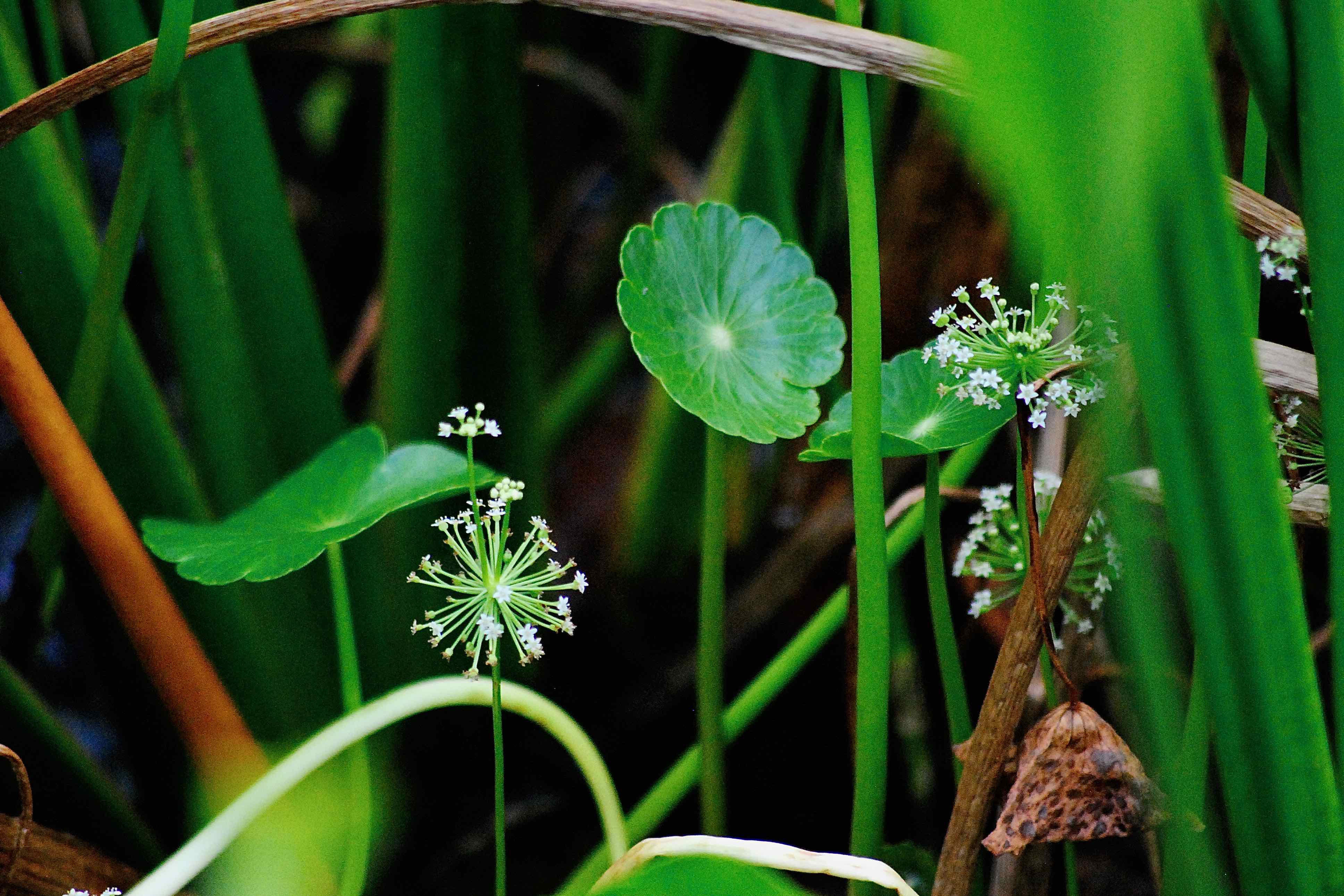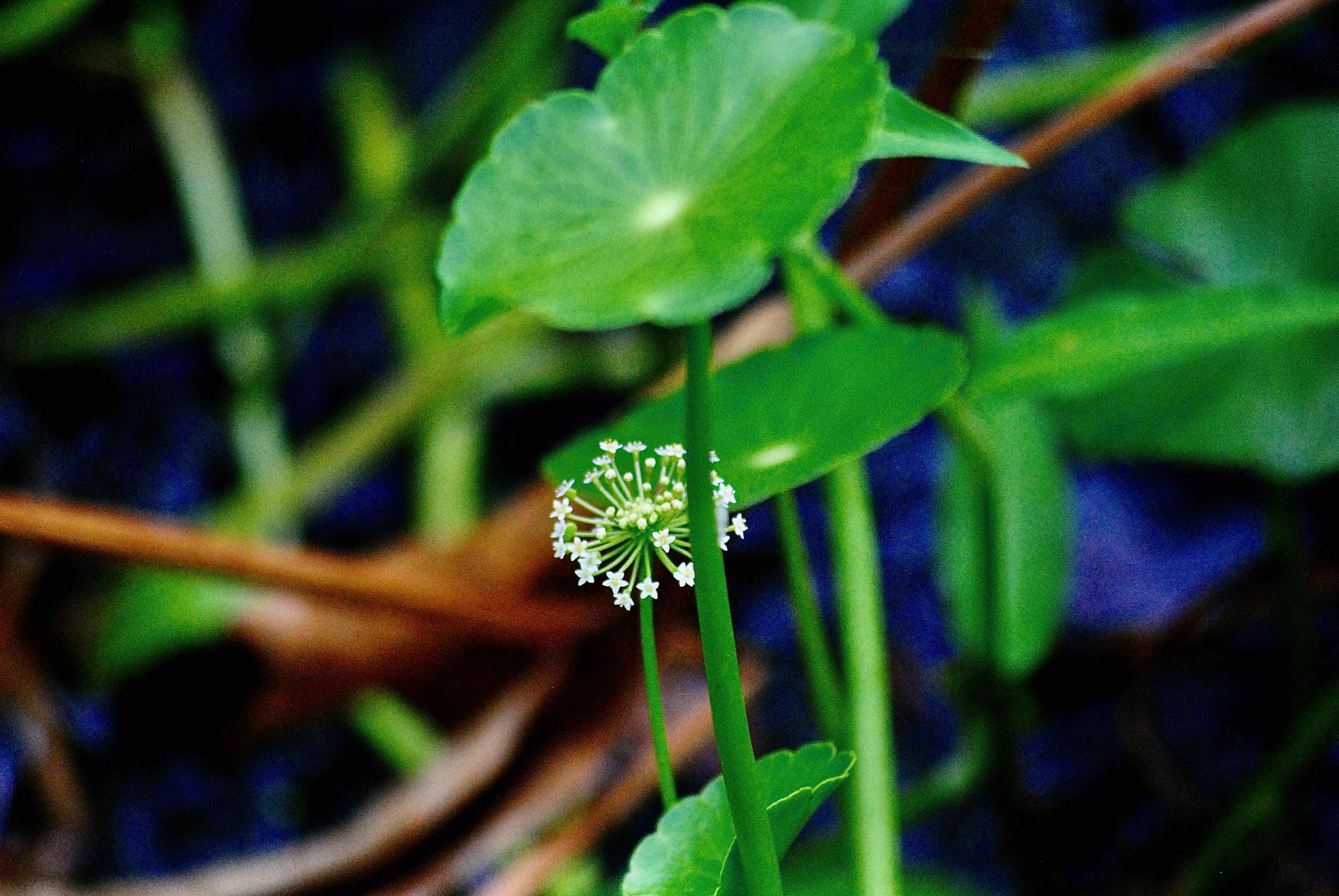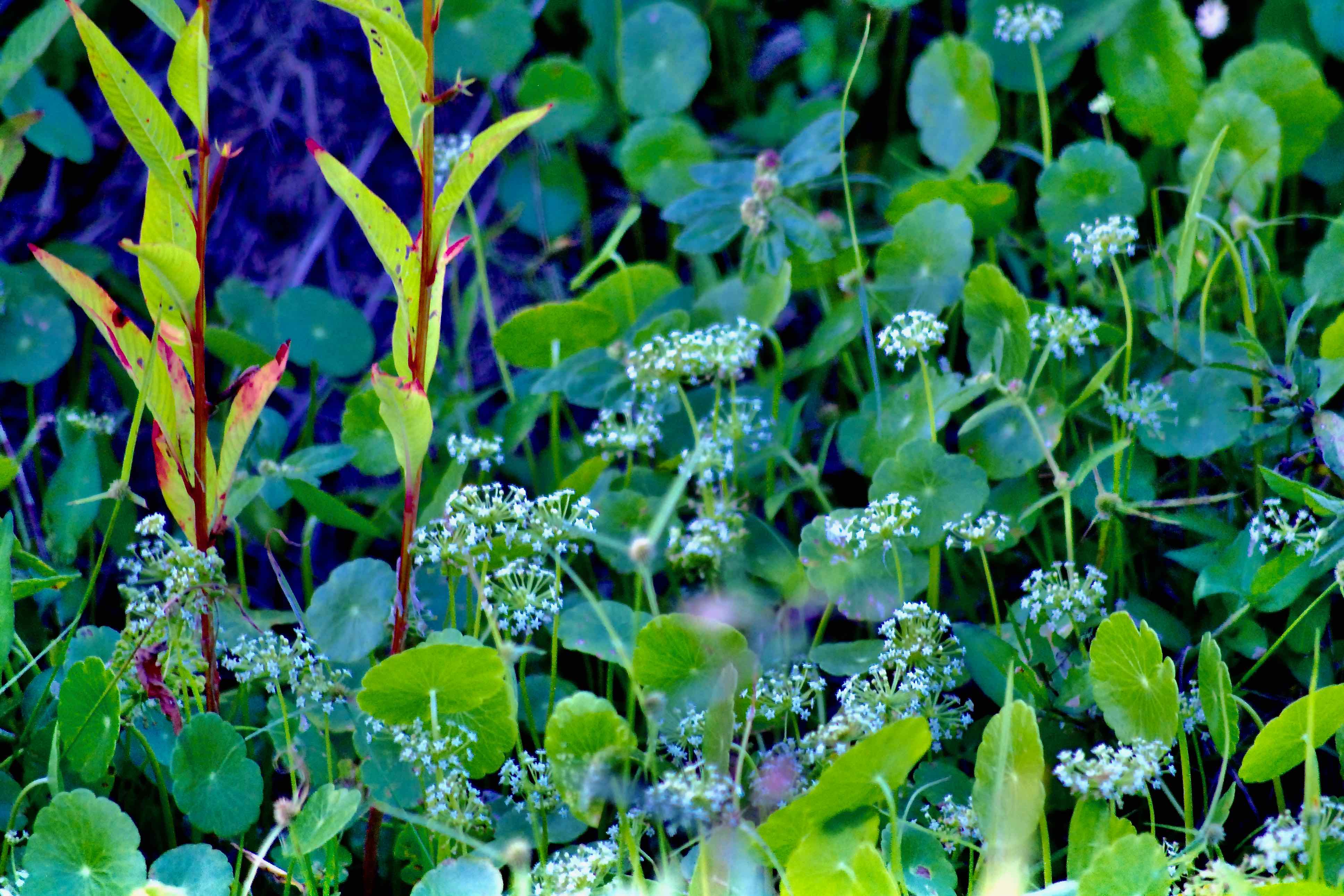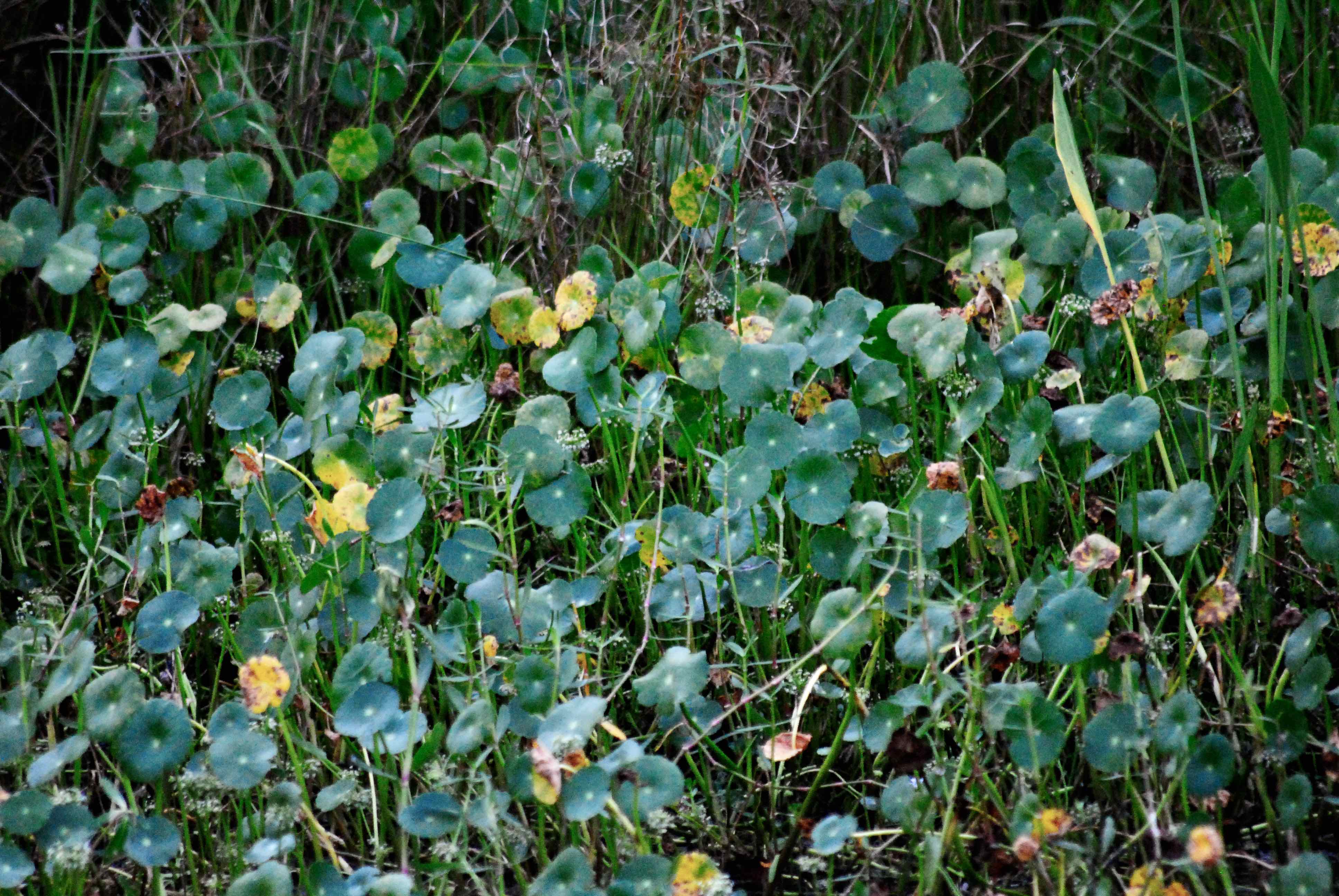
Manyflower marshpennywort, photographed at Green Cay Nature Center, Boynton Beach, Palm Beach County, in October 2014.
Manyflower marshpennywort, Hydrocotyle umbellata, might have a familiar look to it. In fact, you might think you've have seen it growing in a lawn near you. Maybe your own, even.
It's one of group of plants called water pennyworts or dollarweeds that grow mostly in wet places but will creep into dry land when there is enough moisture to sustain them. Overwater your lawn and they might establish themselves. Or they might find a home in the vicinity of an airconditioning drain. Basically they all have leaves shaped like an umbrella atop a long leaf stem, or petiole, and a multi-floral spike or head called an umbel (as in umbellata) The flowers themselves are small and white to greenish white.
Manyflower marshpennywort grows in moist soil, but it also can be submerged. It spreads via long, creeping stems, and is capable of forming dense patches. On land, It's a short plant, growing to a foot or less; in deep water, the petioles can be as long eight inches. Its leaves are simple, round, umbrella like, with the petiole joining in the center. The leaves are scalloped along the edges and alternately arranged. They are dark green and leathery to the touch.
The stems can be several feet long, with nodes along the length that produce roots. As you might suspect from that, manyflower marsh pennywort can reproduce vegetatively. Pieces break off from the main plant, root and become a new plant. In Canada, manyflower marshpennywort isn't known to produce fruit (a small, dry capsule), so it reproduces entirely by this method. It is a perennial.
Waterfowl eat manyflower marshpennywort. It provides cover for a bunch of small critters, especially its submerged parts. Us humans use it as a ground cover, particularly around ponds and marshes. It's been used in folk medicine in various forms as an anti-inflammatory, to stimulate memory and to relieve anxiety. The Seminoles used it to treat coughs. It's said to be edible either in a salad or as a cooked green, but it's also known to cause nausea in some people even though it's not considered toxic. And there is a possibility that it could pick up heavy metals, pesticides and other pollutants from the water where it's growing.
Its range extends throughout much of the Southeast, the Mid-Atlantic states, the West Coast, including California and Oregon, and into the Midwest. It's common here, found in most Florida counties, but not Monroe or Broward. It's in Canada, Mexico, the Caribbean, Central America and South America. It's found elsewhere around the globe as an introduced plant; in places, it's considered a noxious weed. Both Connecticut and Ohio list manyflower marshpennywort as endangered, and it likely doesn't exist any more within the Commonwealth of Pennsylvania. In Canada, it's considered "of special concern;" Nova Scotia lists it as endangered
Other names include manyflowered marshpennywort, water pennywort, money plant and navelwort. It was formerly classified as a member of Apiaceae, the carrot family, but taxonomists have moved it into Araliaceae, the schefflera family.
Click on photo for larger image
Links for Manyflower Marshpennywort



